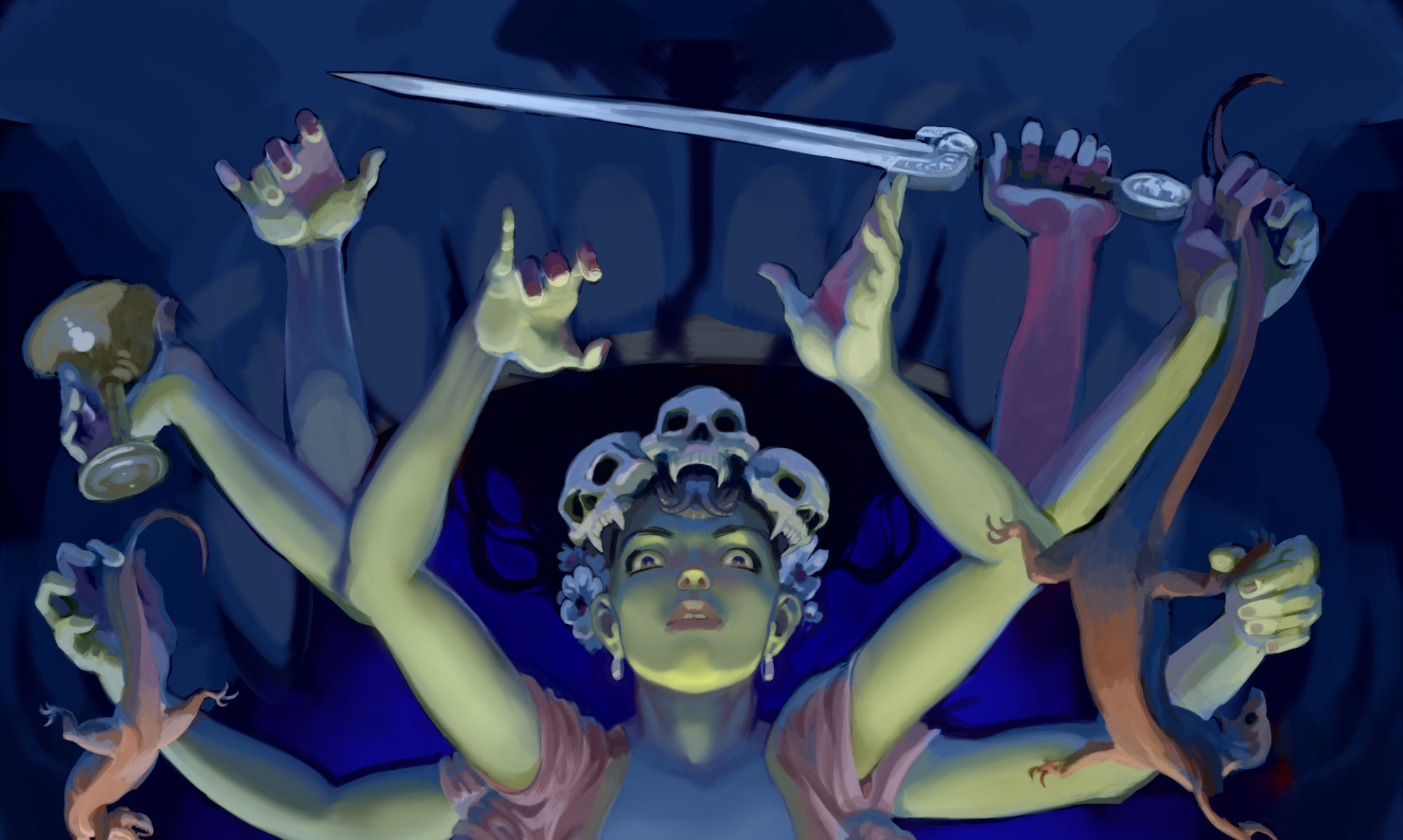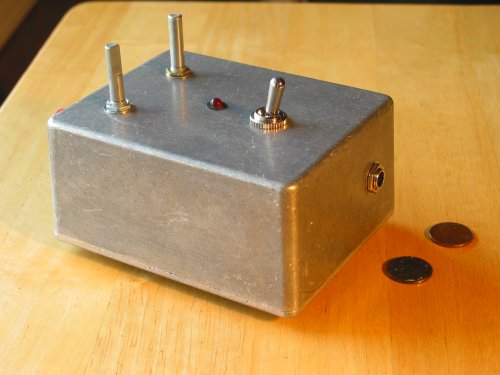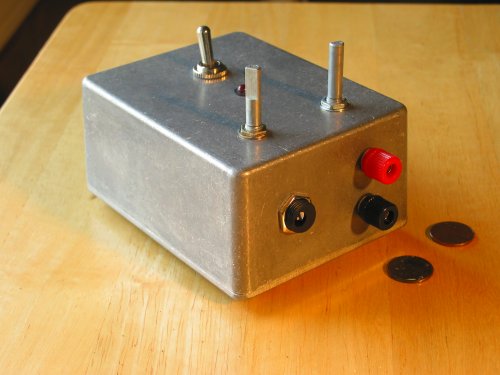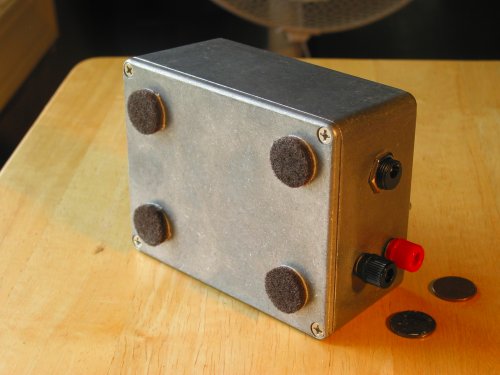If I seem to be leaving info you want to know out, see if I’ve mentioned it already in the previous Little Gem posts, below. Or, ask away in the comments section.
The Ruby is a slight variation of the Little Gem design. The biggest difference is that it has a transister added to the circuit, placed to preserve the higher frequency signals, so the amp won’t sound as dark as the Little Gem. I built the previous Little Gems in order to gain enough experience to do the Ruby right; I had decided I would probably like the Ruby best, based on the write-ups and sound samples at www.runoffgroove.com.
For this build I splurged and bought a few cobalt drill bits, so that I would be able to drill a metal enclosure. I picked up a metal project box at the local electronics store. But I did not grab a punch, which is used to make an indentation to guide the drill bit when it starts to bore. This means that my holes were off center, or generally just not quite where I wanted them. I’ll have to get one for next time.
I also wanted to try to get the whole dc adapter + battery power situation to work this time. The only info I could find on how to do this was the stompbox wiring guide at Beavis Audio. I wasn’t making a stompbox, but I figured it couldn’t be too far from what I needed. And it wasn’t, except it took for granted that I would know which lugs was which on my dc adapter jack. It turns out I didn’t. But I’ll get to that. The stompbox layout also includes a led to let me know when it’s on, which means I didn’t need the little labeled washers, and can tell from far away if I’ve left it on.
The build went smoothly until it was time for me to connect the dc adapter jack. It has 3 lugs, 2 of which are connected to each other while nothing is plugged into the jack, but disconnected when your cable is plugged in.
Here’s where I got into trouble. I assumed that the center pin of the jack would be the positive pole, and the sleeve would be negative. After all, that’s how the mono plugs on our guitar cables work. Besides, wouldn’t it be a bad idea to have hot part of the plug exposed and therefore easiest to accidently ground, causing a short, or perhaps shocking someone?
This assumption is incorrect. It seems the most common way to wire dc plugs & jacks is called “center negative.” The pin in the center of the jack is negative, and the sleeve is positive. The reason for this is that the ‘switch’ that disconnects the 2 lugs I mentioned earlier when a plug is inserted into the jack is ‘thrown’ by being forced aside by the sleeve of the plug. This way the battery’s positive terminal is connected to the lug that is disconnected by the plug, and the plug’s sleeve provides power in its place. This way the battery won’t provide power when the wall-wart connected (which is what fried the first chip I had in my last Little Gem build).
Not knowing this, I connected the dc plug to the amplifier circuit with the center positive. When I plugged the amp into the wall, I ran 9 volts through the circuit backwards, which killed something in there. I couldn’t find exactly what I had destroyed– most likely the polarized capacitors, but perhaps also the transistor and chip. I had to toss the first build I made of the Ruby, as I had quite swiftly converted it to junk. I then struck out into the internets to discover what I have related above. I also realized I might have connected my transistor incorrectly as well, and ended up using the photo of a build Ruby on Runoffgroove combined with their board layout and schematics to get it right the second time.
It took two weeks for me to get over the disappointment and embarrassment of having wired my first attempt so wrongly, but after reading a great essay in Make magazine about the benefits of failure, I gave it another shot. And got it right on the second try. I still have to find some knobs for the box, but might just let that go– I’m considering all these mini-amps to be prototypes until I build one that I think is perfect enough, when I’ll build one to be pretty as well as great-sounding.
Here again are a couple of .ogg files demonstrating my poor skills and the amp’s sound:
Double Game – Kinda clean and quiet, as usual.
Woke Up Down – Gain way up. Nice and crunchy.
The Ruby does sound good. Certainly better than the Little Gem, which as I’ve said before, isn’t bad for 9 volts. The Ruby has just barely a bit more headroom, and a brighter sound than the Little Gem. I like it a lot, but am wondering about the Little Gem v.2, which uses 2 amplifier chips, splitting the signal load between themselves. The next amp I build will be that, but before I do, I have plans for some effects pedals…




